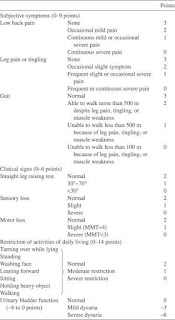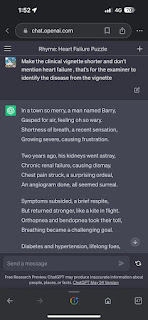48 M with decreased urine output and pruritus
This is an online E log book to discuss our patient's de-identified health data shared after taking his/her/guardian's signed informed consent.
Here we discuss our individual patient's problems through series of inputs from available global online community of experts with an aim to solve those patient's clinical problems with collective current best evidence based inputs.
This E log book also reflects my patient-centered online learning portfolio and your valuable inputs on the comment box is welcome."
CHIEF COMPLAINTS
50 year male resident of tippathi mandalam Nalgonda district ,farmer by occupation came with chief complaint of
Itching in the front and back and both upper arms since 2 months .
Nausea , vomitting,loss of appetite since 7days
Decreased urine output since 1day
HISTORY OF PRESENTING ILLNESS
At the age of 13 in 1986, the patient began his career as a lorry cleaner, accompanying a driver for the first two years before starting to drive the lorry himself at the age of 15. He continued in this profession until the age of 45 in 2019, driving 100km round-trip per day and working 4-6 days per week depending on his financial needs.
Five years ago, the patient started to feel easily fatigued and was diagnosed with high blood sugar at a local hospital. He was started on oral hypoglycemic agents (OHAs) but eventually switched to insulin as his blood sugar remained uncontrolled. For the past four years, he has been taking an inadequate dose of insulin (16-18U once a day instead of the prescribed twice a day), as he experienced hypoglycemic symptoms such as sweating, palpitations, and weakness intermittently when taking the full dose.
Two years ago, the patient suffered a thorn prick to his left second toe, which worsened despite treatment by a local practitioner for 15 days. Disarticulation of the toe was eventually performed at our hospital. For the past year, the patient has had on-and-off pitting pedal edema up to the knee level, without any associated breathing difficulties
No history of fever ,headache ,rash ,joint pains ,no history of change in sleep pattern ,confusion ,altered sensorium ,no history of blood in stools, melena ,constipation .
Two months ago, the patient began experiencing nighttime itching on his back, which gradually spread to his buttocks, upper arms, and front. For the past week, he has had symptoms of nausea, loss of appetite, and decreased urine output, prompting his admission to our hospital for further management. There is no history of fever, difficulty breathing, or swelling in the ankles.
PAST HISTORY
The patient was diagnosed with type 2 diabetes mellitus five years ago. For the first year, the patient used oral hypoglycemic agents, but for the past four years, he has been on insulin once daily. There is no history of hypertension, asthma, tuberculosis, epilepsy, or thyroid disorders. In October 2022, the patient experienced weakness in both their upper and lower limbs, making it difficult for him to get out of bed. The patient was diagnosed with hypokalemic paralysis, which was confirmed by a low serum potassium level of 1.7 mEq/L. After correcting the potassium level, the patient's strength in their limbs returned, and he was able to get up from bed. The patient was given syp potcklor for one week and did not experience any similar episodes thereafter.
FAMILY HISTORY
No similar complaints in the family
TREATMENT HISTORY
The patient was diagnosed with type 2 diabetes mellitus five years ago. For the first year, the patient used oral hypoglycemic agents, but for the past four years, he has been on insulin once daily.
He takes inj insulin S/C once daily
SURGICAL HISTORY
Two years ago, the patient suffered a thorn prick to his left second toe, which worsened despite treatment by a local practitioner for 15 days. Disarticulation of the toe was eventually performed at our hospital.
Patient underwent cataract surgery for his right eye 1-1/2 year back
PERSONAL HISTORY
Daily Routine: This individual typically wakes up at 7:00am and proceeds to tend to his farm. He waters his fields and returns home by 10:00am to eat tiffin. At 11:00am, he heads back to the farm and works until 6:00pm. He takes insulin in the afternoon prior to eating lunch. Once he returns home, he takes a bath and has dinner around 8:00pm. He usually goes to bed by 9:00pm.
Family Life: The individual has two daughters, both of whom are married and have children.
Addictions: He has a habit of consuming umber and drinking alcohol and smoking cigarettes (biddis)
Alcohol -abstained since 1 year due to guilt over his health worsening day by day,but used to consume 90-180ml/day whiskey
biddis- stopped smoking one year ago (5-6bidis/day).
GENERAL PHYSICAL EXAMINATION
Patient is conscious, coherent,co-operative.Moderately built and Moderately nourished.
PALLOR -absent
ICTERUS -absent
CYANOSIS -absent
CLUBBING -absent
LYMPHADENOPATHY -absent
PEDAL EDEMA -absent
VITALS
TEMP-a febrile
BLOOD PRESSURE -140/80mmHg right arm in supine position
PULSE RATE -90bpm,regular rhythm,normal volume
Jvp is not raised ,normal in character ,volume
RESP RATE 18cpm thoracoabdominal
SPO2-98% in room air
HEAD TO TOE EXAMINATION
papules on the back, front, upper arms, and buttocks, and the Koebner phenomenon is present. In addition, there are dark hyperpigmentated patches on the back, front, and upper arms, and there is a thickened area probably plantar keratosis on the sole of the right foot.
The second toe on the left foot is missing.
CVS
Elliptical & bilaterally symmetrical chest
-No visible pulsations/engorged veins on the chest
-Apex beat seen in 5th intercostal space medial to mid clavicular line
-S1 S2 heard
-No murmurs
RESPIRATORY SYSTEM
Upper respiratory tract normal
Lower respiratory tract :
-Trachea is central
-Movements are equal on both sides
-On percussion resonant on all areas
-Bilateral air entry equal
-Normal vesicular breath sounds heard
-No added sounds
-Vocal resonance equal on both sides in all areas
CNS
Higher mental functions
-Patient is conscious, coherent,co-operative.Oriented to time, place,person.
-Speech = Fluency,comprehension,repetition intact
-Memory =Recent,Remote,Immediate : Intact
Cranial nerve examination -
2 - Visual acuity RE-6/60,LE-CF 1mts
other cranial nerves are normal
Motor examination :
Bulk of muscle normal on both sides on inspection
Tone
Right. Left
Upper limb. Normal. Normal
Lower limb. Normal. Normal
REFLEXES
Right. Left
Biceps. - -
Triceps. - -
Supinator. - -
Knee. - -
Ankle. - -
Plantar. flexor flexor
Sensory examination:
1.Spinothalamic: R L
Crude touch + +
Pain + +
2.Posterior column:
Fine touch + +
Vibration Reduced
ankle - - --
Knee. -- --
Wrist. 6sec 6sec
Position sense
LL. Rt-6/10. Lt --5/10
3.Cortical
Stereognosis: + +
Graphesthesia +. +
CEREBELLUM:
Finger nose and finger finger test were normal
No dyadiadokokinesia
No pendular knee jerk
Heel knee test : normal
PER ABDOMEN EXAMNATION
-Scaphoid
-No visible pulsations/engorged veins/sinuses
-Soft,non tender, no guarding and rigidity, no organomegaly
-Bowel sounds heard
INVESTIGATIONS
X ray
PROVISIONAL DIAGNOSIS
The patient is experiencing uremic symptoms as a result of chronic kidney disease (CKD), which include papular lesions on the upper trunk, back, buttocks, and upper arms, as well as the Koebner phenomenon. They also have a history of diabetic neuropathy and hypokalemic paralysis as of October 2022, and have been diagnosed with type 2 diabetes for five years.
An indication for dialysis in this patient is anuria and further uremic symptoms such as nausea and loss of appetite. Following the dialysis treatment on April 23rd, the patient's symptoms showed improvement.
After the dialysis procedure, the patient's renal function tests were evaluated.
















Comments
Post a Comment